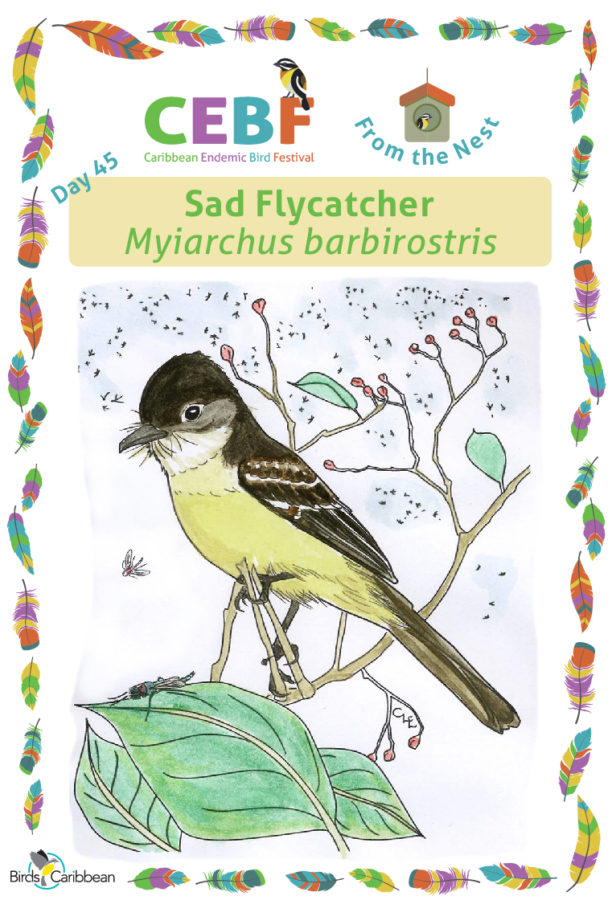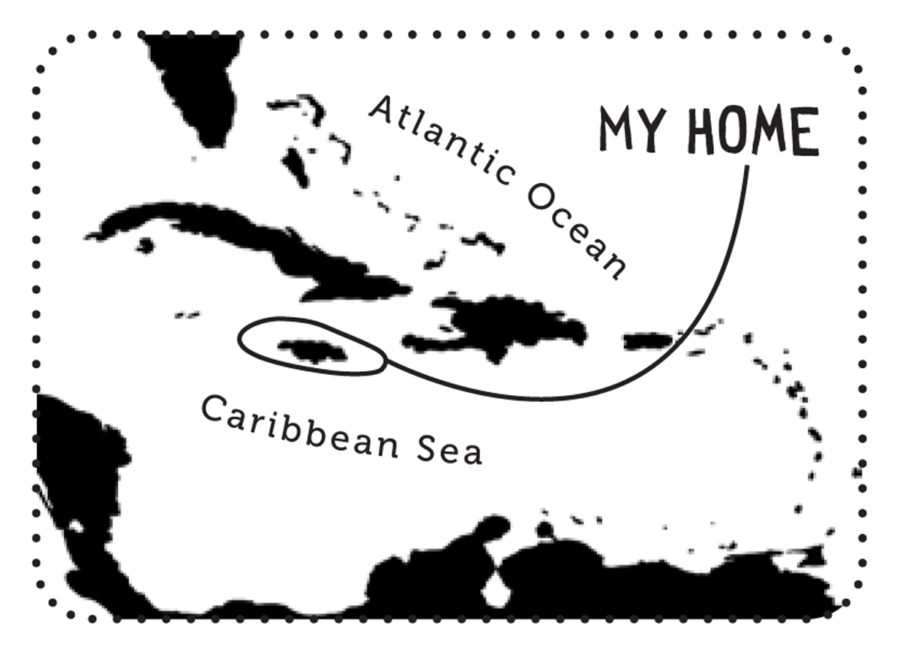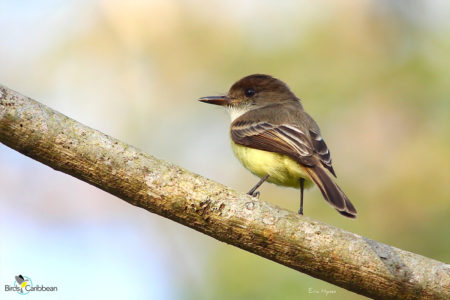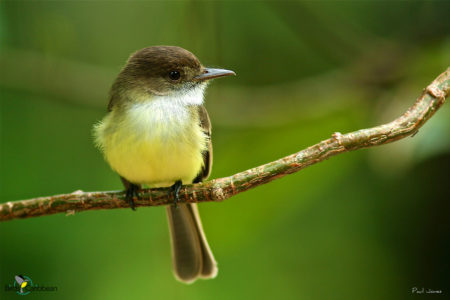Celebrate the Caribbean Endemic Bird Festival (CEBF) with us in our virtual “From the Nest” edition! Have fun learning about a new endemic bird every day. We have colouring pages, puzzles, activities, and more. Download for free and enjoy nature with your family at home.

Endemic Bird of the Day: Sad Flycatcher
 Sometimes one can get a bad name through no fault of one’s own. In this respect the Sad Flycatcher must be one of the unluckiest birds in Jamaica and perhaps the world. Rufous-tailed Flycatchers have Rufous-tails. Ring-tailed Pigeons have rings on their tails. But there is nothing sad about a Sad Flycatcher. It doesn’t sound sad or look sad. It is a pretty, perky little bird, one of the most common sights in the wooded pastures of central Jamaica. So where did it get its name?
Sometimes one can get a bad name through no fault of one’s own. In this respect the Sad Flycatcher must be one of the unluckiest birds in Jamaica and perhaps the world. Rufous-tailed Flycatchers have Rufous-tails. Ring-tailed Pigeons have rings on their tails. But there is nothing sad about a Sad Flycatcher. It doesn’t sound sad or look sad. It is a pretty, perky little bird, one of the most common sights in the wooded pastures of central Jamaica. So where did it get its name?
The Sad Flycatcher was first described by P.H. Gosse in the mid-nineteenth century. He called it the Black-billed Flat-Bill, and gave it the scientific name Mylobius tristis. Tristis means sad in Latin. This appears to be the origin of the name. In his description, Gosse wrote that the song of this bird was, “A single wailing note, somewhat protracted, particularly sad to hear, but sometimes followed by one or two short notes in another tone.” While almost everything in his book, “The Birds of Jamaica” is correct – an astonishing feat, considering the how little time he spent in Jamaica – he was wrong about this sound. The call of the Sad Flycatcher is not sad at all. Instead it is a cheery pip, pip-pip pereeee!
The Jamaican Pewee, on the other hand, does indeed have a mournful, single-noted call. This species was also first described by Gosse. The two species are often found in the same habitat. Perhaps Gosse confused the two, and so one of the happiest little birds in Jamaica got a bad name.
The Sad Flycatcher is endemic to Jamaica. It’s local name is Little Tom Fool. It feeds on small insects by sallying from high perches to capture its prey, often returning to the same perch. It also eat small fruits. It has a dark brown crown, brown upperparts, a white throat and upper breast, and a yellow belly. The Sad Flycatcher can be found in forests, woodlands, and pasture edges at all elevations across Jamaica. Learn more about this species, including its range, photos, and calls here.
Colour in the Sad Flycatcher!
Download the page from Endemic Birds of the West Indies Colouring Book. Use the drawing above or photo below as your guide, or you can look up pictures of the bird online or in a bird field guide if you have one. Share your coloured-in page with us by posting it online and tagging us @BirdsCaribbean #CEBFfromthenest
Listen to the call and song of the Sad Flycatcher
The Sad Flycatcher‘s call is a frequent pip or pip-pip. It’s song is a rising, cheery pip-pip pereeee.
Puzzle of the Day
Click on the image below to do the puzzle. You can make the puzzle as easy or as hard as you like – for example, 6, 8, or 12 pieces for young children, all the way up to 1,024 pieces for those that are up for a challenge!


Activity of the Day
FOR KIDS & ADULTS: Enjoy these two short video of the Sad Flycatcher. The first one is by Aves Puerto Rico Felpe – the bird is perched, looking around and it gives its cheerful call pip, pip-pip pereee several times. This video was filmed in the Blue Mountains of Jamaica. The second video is lovely clear footage of a perched bird, filmed in Kew Park, Westmorland Parish, Jamaica. The bird flies out and lands back on the branch to give us a nice view of its colors from behind.
